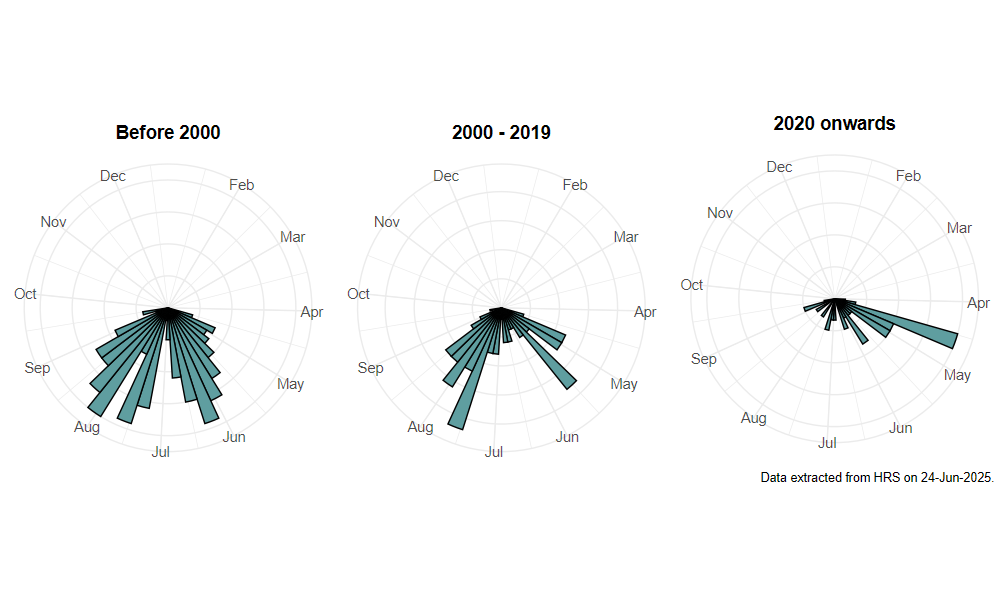Neocnemodon vitripennis (Meigen, 1822)
Identification
Identification difficulty = 4. ![]()
![]() according to Ball & Morris, 20241
according to Ball & Morris, 20241
Synonymy
Cnemodon vitripennis Meigen in Coe(1953)2, Neocnemodon vitripennis (Meigen) in Stubbs & Falk (1983)3. This species was separated from H. pubescens in 1955 and earlier records of these two species are likely to be confused.
Biology
The larva is predatory on adelgid bugs and have also been found attacking the woolly aphid Dreyfusia picea on Firs Abies sp., and coccids on Lombardy Poplar Populus italica. Associated with a range of woodland types including conifer plantations and even urban parks and mature gardens. Adults visit a range of low growing flowers, but also flowering shrubs. They have been caught in numbers in water traps set among brambles Rubus sp.
Flight period
The following plots show the number of unique records per week excluding those reported to be of immature stages.

Distribution
Though still infrequent, this is the least scarce member of the genus. Records are primarily concentrated south of a line between the Mersey and the Humber, but there are scattered records from Wales, northern England and Scotland.

Trends
The following plots show the Frescalo TFactor vs year and a map of the rescaled frequency (all records) for the species.
-
Ball, S., & Morris, R. (2024). Hoverflies of Britain and Ireland. WILDGuides (3rd ed.). Oxford: Princeton University Press. ↩
-
Coe, R. (1953). Diptera: Syrphidae. Handbooks for the Identification of British Insects, 10(1), 1–98. ↩
-
Stubbs, A., & Falk, S. (1983). British Hoverflies: An Illustrated Identification Guide (1st ed.). Reading: BENHS. ↩